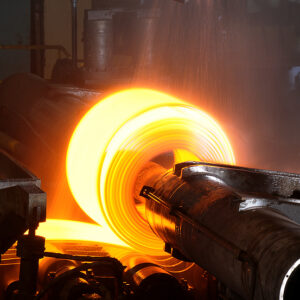What do a computer tablet, a pickup truck and a bedside lamp have in common? These, and virtually every other commercial good and service in the United States, rely at some level on steel. Nearly 100 million metric tons of the metal are consumed yearly in the United States to build infrastructure and transport goods, while billions of metric tons uphold our built environment.
Whether they are aware of it or not, Americans rely on steel to be cost-effective, high-quality and dependably available. But these conditions should not be taken for granted. The future is not certain, and welcoming investment opportunities, like U.S. Steel’s agreement to be acquired by global leader Nippon Steel, may be essential to the long-term viability of America’s steel industry.
No one can disagree that steel is essential to modern life, a robust energy sector, and the infrastructure that facilitates it all. Yet, there are disagreements on how to maintain the industry and supply of steel, the results of which could threaten energy security, infrastructure buildouts and price inflation across the economy and with rippling geopolitical implications to boot.
While many items require steel directly — like the frame of a vehicle — others indirectly rely on steel, like natural gas requiring steel for rigs and pipelines. Other things are more indirectly, but no less fundamentally, dependent on steel, like a lightbulb, powered by electricity that comes through high-voltage transmission towers.
Steel makes up more than 70 percent of a wind turbine’s mass, meaning that a small onshore wind turbine requires 100 tons of steel while offshore turbines require 10 times more. As for solar, the steel demand for each new MW of solar power can exceed 40 metric tons.
Twenty-five tons of steel are required per tower for the transmission infrastructure to move power to consumers. And the supply chain moving all raw materials and every consumer good to market? Railroads require hundreds of tons of steel for both tracks and locomotives. Around five tons of steel go into each new semi-truck, while more than 40 tons go into container ships — not to mention the intermodal containers.
Demand and use of the metal exist in virtually every corner of the economy and country.
All that steel isn’t just a material need. Yes, it has to be supplied, but the price at which it is provided, the quality, and the reliability of the supply chain are equally critical. Every ton of steel added to a project affects the cost of the overall infrastructure, which is reflected in the utility bills, consumer prices, and availability of energy, power, water, internet, and other goods and services throughout the economy. When steel costs more, so does everything that moves by truck or rail, is powered by electricity, or is stored, supplied, or sold in a commercial building. Steel is that fundamental.
So, how do we ensure reliable, high-quality, low-cost steel? We limit disruptions of voluntary transactions by private companies and friendly allied nations, like U.S. Steel’s agreement to be acquired by Nippon Steel, a Japanese company.
Nippon, the world’s fourth-largest steel producer, aims to build on U.S. Steel’s strengths by infusing its technology, research and development. A significant investment into a leading American steel company should be a welcome development for those depending on infrastructure buildouts and an energy transition. Nippon has said there will be no layoffs, facility closures or offshoring of production capacity.
The industry’s health is directly related to the core aspects we depend on for steel: price, quality and reliability, which the merger would address. Weakened companies need sustainable contracts, workforce, capital, and customers to be able to provide the investor and market certainty needed to keep costs stable. They may need help to meet increases in demand reliably, and if risks appear in their business model or supply lines, the steel quality may suffer. Voluntary mergers with reputable large-scale corporations can shore up each factor and stabilize and ensure longevity and viability.
Those challenging a deal that advances these objectives risk undermining aspects of the national interest. Merger opponents must identify viable alternatives that compete with cost, quality and sustainability this would bring to the domestic steel industry. Otherwise, this may be an example of public officials allowing the perfect to be the enemy of the good.
For America’s steel industry to succeed, leaders must be able to recognize and welcome beneficial investments that encourage innovation and the preservation of American facilities and jobs. The U.S. Steel deal has the potential to do precisely that.


